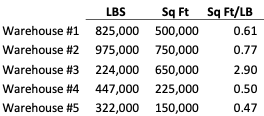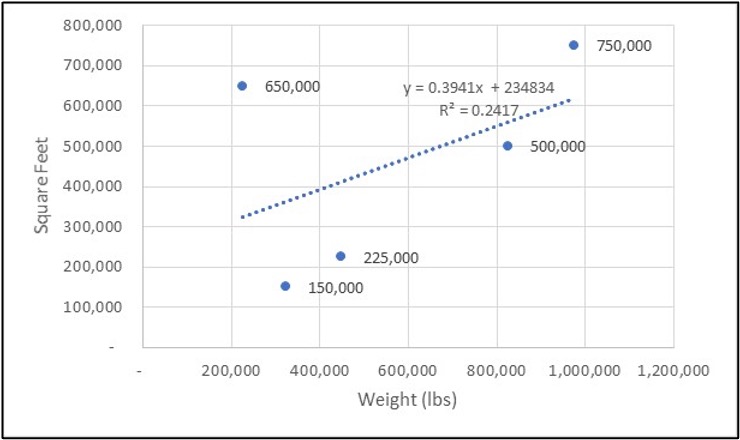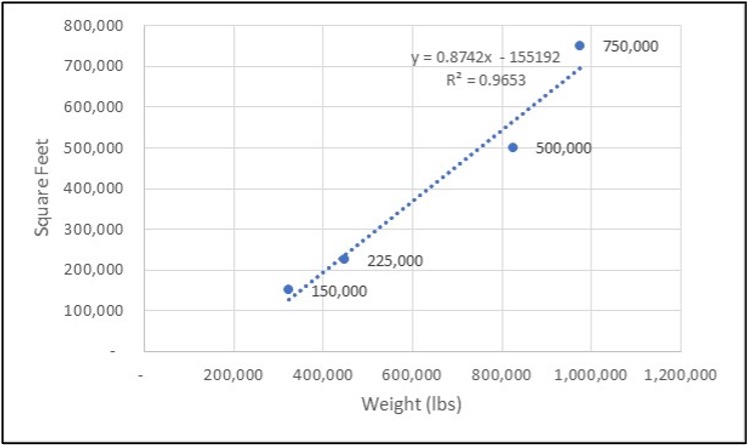 Strengthening your supply chain one link at a time.
Strengthening your supply chain one link at a time.
In a typical network study, the variance in logistics costs across various scenarios is of primary importance; however, approximate sizing for greenfield warehouse locations is also desirable. A network study is not a robust warehouse design effort, but you can approximate greenfield warehouse square feet using various techniques. Using an estimate will aid in site selection to get an indication of available buildings at a given size in the markets of interest.
Weight (usually pounds) is the unit of flow in a majority of models that I’ve constructed over the last fifteen years of network modeling. Ideally, we are able to derive a warehouse capacity in terms of annual pounds of throughput. In many cases, we are given annual units of throughput which is converted to pounds for modeling purposes. Using this capacity relative to the square feet of existing warehouses in the network will allow for an approximation of greenfield warehouse square feet. Consider the sample data below:

The simplest example is where an existing warehouse can be used as the template for greenfield warehouses. In order to size the greenfield warehouse, use the square feet per pounds of throughput capacity multiplied by the greenfield warehouse annual throughput. For example, if Warehouse # 2 is the newest design and the next warehouse in the network would have a similar design then you can use that as the template. If the network model output shows a greenfield location (Warehouse #6) handling 625,000 pounds of throughput then its approximate size would be 481,250 square feet (625,000 x .77). Note that this gives the approximate sizing for a given level of throughput in the design year. The warehouse would be sized larger to handle additional throughput beyond the design year.
Another method that may be used to approximate warehouse square feet is to perform a linear regression plotting warehouse square feet relative to pounds of throughput capacity. Square feet is the dependent variable (y) and weight is the independent variable (x). Plotting the points (weight, square feet) on a scatter diagram allows you to visualize the relationship between warehouse size and pounds of throughput capacity. Using the previous data table the regression analysis is shown below:

A linear trendline and equation as well as the R-squared was added to the chart. With an R-squared of .2417 the regression line doesn’t inspire a lot of confidence. By removing outliers from the data you can recalculate the regression line to better approximate square feet for the greenfield warehouse. Shown below is a new regression analysis without Warehouse #3 which is an outlier at 2.90 square feet per pounds of throughput.

The new regression line has an R-squared of .9653 which indicates a better predictive value with regard to warehouse square feet. Using the formula you can substitute x for the annual throughput weight from the network model to derive approximate warehouse square feet. From the previous example, Warehouse #6 had 625,000 pounds of throughput so its approximate square feet would be 391,183 (625,000 x .8742 – 155,192). This would be the approximate size of the warehouse in the design year and should be increased to handle greater throughput in the future.
There are of course other approaches to greenfield facility sizing with a network study, particularly if the planned mission, technology, SKU selection or overall volume of the facility is dramatically different from current facilities. That is a discussion for another time, so stay tuned!
—Dan Gunter, St. Onge Company